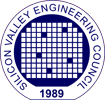Location: Maple Room, Mountain View Community Center, 201 S Rengstorff Ave, Mountain View, CA 94040
Speaker:
Fen Chen,1Cruise LLC, San Francisco, CA, USA
(mailto:yan.a.li@intel.com)
Abstract:
Visualization technologies are the most vital components of in-vehicle interactions. The shift toward autonomous vehicles and connected cars is bringing a future in which occupants would be needed to monitor the status of the vehicle and its surroundings. Meanwhile, occupants would also spend significantly more time watching displays for entertainment, information, and connectivity on the road. Therefore, the need for in-vehicles displays with better visibility, brightness, viewing angle, resolution, sharpness, and reliability together with larger sizes and free-form that offer unobtrusive visual information during journeys is on the rise. Superior display with touch technologies can enable a safe, informative, and comfortable driving or riding experience. The applied in-vehicle display products include a center infotainment display, rear seat entertainment display, head-up display, side mirror display, and instrument cluster display. In this talk, motivations as well as various architectures of display including LED, LCD, OLED, Mini/Micro-LED, TFT, flexible, heads-up, and the touchscreen will be introduced. The development trend of in-vehicle display technology will be discussed. The mature TFT LCD technology is still the mainstay for in-vehicle in the short term. OLED and Mini LED/Micro LED array technology has a relatively large advantage in the medium and long term. Due to the unique requirements and opportunities such as aggressive adoptions of EVs, digitalization, and autonomous vehicle, the in-vehicle display technology development will be moved from a “follower” to a “front runner”. Designing displays for vehicles imposes very different challenges than designing them for consumer applications. This is due to some unique factors associated with vehicle usage, such as the required product life cycles, the extremely harsh environment, frequent mechanical impacts, the stringent EMI/EMC compliance, the required high-level ESD protection, and functional safety requirements. Requirements and challenges of display in-vehicle application, including optical performance, appearance, fabrication, characterization, mura/defect inspection, Demura technique, visibility in bright and complete darkness, touch functionality, quality, reliability, EMI/EMC/ESD, and functional safety will be reviewed. Some common LED LCD display reliability failure modes and effects include FOS spot lighting failure mechanism and risk assessment, BLU film buckling and wrinkle failure mechanism and modeling, metal oxide TFT panel level VGH and VGL reliability modeling, LCD panel UV aging reliability modeling, Polarizer bleaching failure mode and reliability modeling, free fall object impact test and LCD glass crack failure risk assessment, and LED luminance degradation reliability modeling will be presented. Automotive display technology will continue to evolve as there are still many emerging technologies, as well as the refinements of existing technologies, which are still under development. This continued growth will overwhelm the driver and occupants with maximum comfort and convenience on the road.
Co-sponsored by: IEEE-VTS (Vehicular Technology Society)
Speaker(s): Fen Chen,
Agenda:
Check-in and pizza at 6:15PM – 6:45 PM.
6:45 to 8:00 – Conclusion with Q&A
Room: Maple room, Bldg: Mountain View Community Center, 201 S Rengstorff Ave, mountain view, California, United States, 94040
In-Vehicle Display Technology Development and Challenges

- This event has passed.

